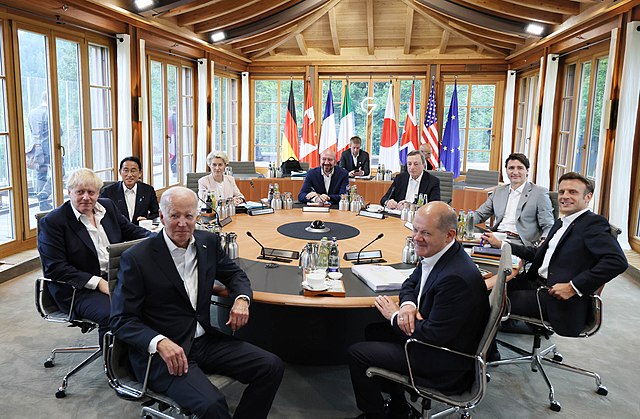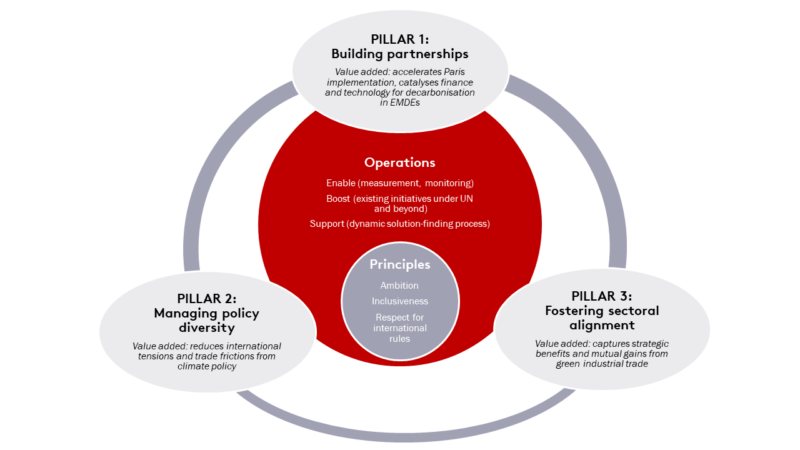Collaborating and delivering on climate action through a climate club: an independent report to the G7

Download
The world has come together behind the goals of the Paris Agreement, and made progress at COP26 in Glasgow, but actions and commitments made to date fall well short of what is needed. A Climate Club, as called for in the G7 Leaders’ Statement on Climate Club of June 2022, can be part of an effective global response to the climate crisis.
This independent report sets out a rationale and possible design of a Climate Club, taking its point of departure from the June 2022 G7 Leaders’ Statement on Climate Club.
Key points and recommendations
- A Climate Club can enable greater ambition by fostering commitment to collective climate goals, accelerating action, facilitating financial and technology partnerships, managing concerns around carbon leakage and competitiveness, and aligning around common interests in guiding industrial transformations.
- Given its centrality to growth and development, the climate is part of the mission of virtually every international institution. However, there are gaps and shortcomings in the institutional architecture, which are delaying collective progress.
- A Climate Club could provide a flexible framework for driving the climate agenda forward through a coordinated, collaborative approach among countries that represent a large proportion of global greenhouse gas emissions.
- The proposed design of the Climate Club is around three pillars of action (see Figure below). First, ‘building partnerships’ would focus on climate adaptation, resilience and biodiversity in addition to climate change mitigation. Finance partnerships would enable the scaling up of international climate finance while Country Platforms can facilitate investment at country level. It would also include technology partnerships to initiate cooperation on research and development.
- The ‘managing policy diversity’ pillar looks at preventing carbon leakage, through carbon border adjustment mechanisms (CBAMs) for example, which would require international policy harmonisation. More broadly, the Climate Club could support the convergence of decarbonisation paths.
- The ‘fostering sectoral alignment’ pillar is an effort to align policies across member countries to provide collective support for decarbonisation in key sectors, including emissions-intensive heavy industries such as steel, aluminium, cement, hydrogen and chemicals.
- The proposed Climate Club must be seen and communicated as part of a positive narrative: a global strategy to recover and rebuild in a way that places climate action at the heart of a new growth story, powered by investment, technology, policy and finance.
- The Climate Club should be inclusive, which means acknowledging differences in countries’ rationale for joining, their climate policy mix, and would constitute desirable benefits of membership.
- Although the initial impetus has come from the G7, the Climate Club should not be launched by G7 countries alone. The framework should be agreed and designed jointly with key developing countries in order to take a broader range of interests into account.

Report authors and commissioning
Preparation of the report was under the overall responsibility of Nicholas Stern. Hans Peter Lankes led the team at the Grantham Research Institute working on the analysis and writing. The team included Amar Bhattacharya, Danae Kyriakopoulou (ch. 4), Rob Macquarie (ch. 6), Roberta Pierfederici (ch. 5), as well as Andrew Lang from the University of Edinburgh (ch. 5).
The report was commissioned by the Bundesministerium der Finanzen on behalf of the German G7 Presidency in 2022 but does not necessarily represent the views of either the G7 Presidency or of other G7 members.

